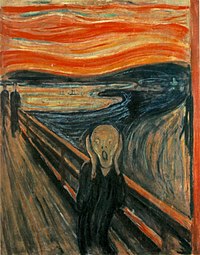
Photo from wikipedia
Over the last two decades, the functional role of the bilateral anterior temporal lobes (bATLs) has been receiving more attention. They have been associated with semantics and social concept processing,… Click to show full abstract
Over the last two decades, the functional role of the bilateral anterior temporal lobes (bATLs) has been receiving more attention. They have been associated with semantics and social concept processing, and are regarded as a core region for depression. In the past, the role of the ATL has often been overlooked in semantic models based on functional magnetic resonance imaging (fMRI) due to geometric distortions in the BOLD signal. However, previous work has unequivocally associated the bATLs with these higher-order cognitive functions following advances in neuroimaging techniques to overcome the geometric distortions. At the same time, the importance of the neural basis of conceptual knowledge in understanding mood disorders became apparent. Theoretical models of the neural basis of mood and anxiety disorders have been classically studied from the emotion perspective, without concentrating on conceptual processing. However, recent work suggests that the ATL, a brain region underlying conceptual knowledge, plays an essential role in mood and anxiety disorders. Patients with anxiety and depression often cope with self-blaming biases and guilt. The theory is that in order to experience guilt, the brain needs to access the related conceptual information via the ATL. This narrative review describes how aberrant interactions of the ATL with the fronto–limbic emotional system could underlie mood and anxiety disorders.
Journal Title: Healthcare
Year Published: 2023
Link to full text (if available)
Share on Social Media: Sign Up to like & get
recommendations!